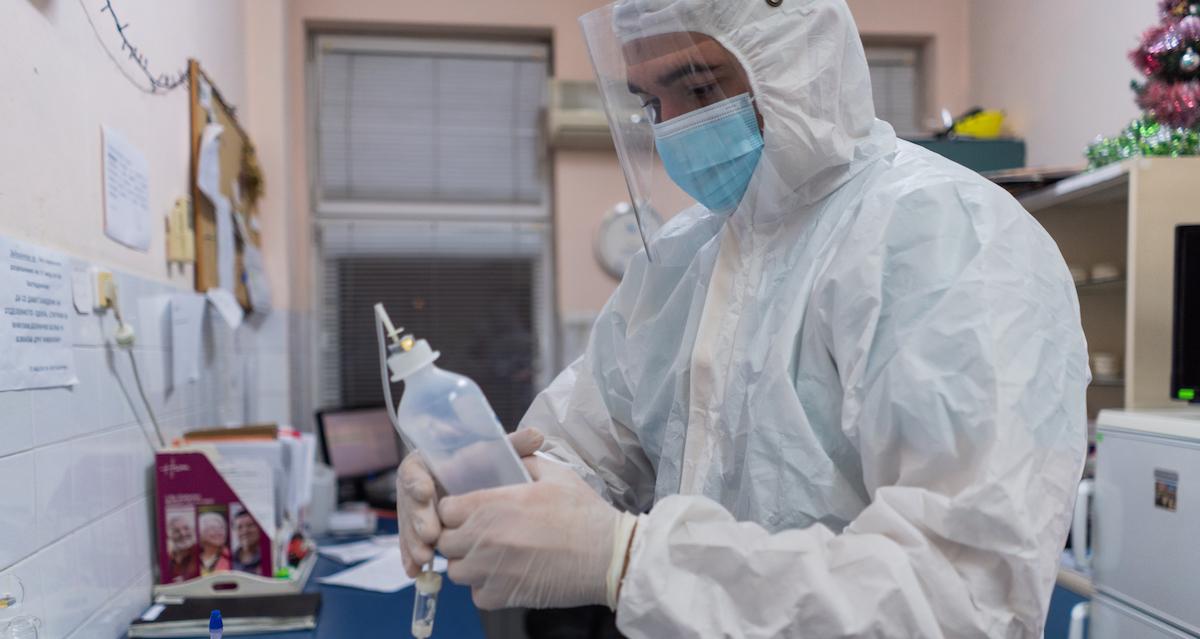How Many COVID-19 Variants Are There? Breaking Down the Virus
How many COVID-19 variants are there, how are they detected, and at what point do they become a major concern for the U.S.? Here's how experts tract the virus.
Jan. 3 2022, Published 2:16 p.m. ET

Different variants have emerged throughout the COVID-19 pandemic. Some of the variants have become a national concern, make the news, and force political and medical leaders to create mandates to slow the spread. In total, how many variants are there?
Not every variant is given the same treatment due to how differently each one circulates. Each variant goes through a series of classifications before it gets a place on the news. The CDC classifies variants in four categories—variants being monitored, variants of interest, variants of concern, and variants of high consequence.

Nurse reviews patients data
Variants being monitored is the most basic classification.
All of the variants begin on this list. The VBM (variants being monitored) list consists of 10 variants. The list is usually longer than the others because it consists of every single circulating variant in the U.S. The variants on this list are alpha, beta, gamma, epsilon, eta, iota, kappa, an unnamed variant, zeta, and mu. Each variant (with the exception of a few) is accompanied by the date that it was listed as a VBM, a variant of interest, and a variant of concern.
For example, the epsilon variant was first listed as a variant of concern on March 19, 2021. It was classified as a variant of interest on February 26, 2021, and was downgraded as a variant being monitored on September 21, 2021. The CDC stated that a variant of interest can be reduced to the VBM list after a sustained decrease in national and regional circulation.
The CDC said that some evidence could show that a variant might not pose a high threat to public health in the U.S. Once a variant starts being monitored, it doesn't leave the list. The variant continues to be analyzed regularly for any changes in its data or transmissibility.

Nurse in Bulgaria works in the manipulation room.
What are variants of interest and variants of concern?
What lands a variant on the VOI (variants of interest) list are features that are associated with "changes to receptor binding, reduced neutralization by antibodies generated against previous infection or vaccination." This also includes resistance to hospital treatments, a predictable increase in the severity of infection, and high transmissibility. Epsilon, eta, iota, kappa, an unnamed variant, and zeta variants were once listed as VOIs before being downgraded to the VBM list. Currently, there aren't any variants of interest.
VOC (variants of concern) are categorized by high rates of transmissibility, increasingly severe infection, "a significant reduction in neutralization by antibodies generated during previous infection or vaccination," and reduced efficiency of medical treatment and/or vaccines. Other VOC features are disruption of targeted diagnostic tests and decreased compliance with several classes of therapies.
WHO inssues warning on Delta and Omicron variants
VOCs might require widespread health mandates or actions like notifying the World Health Organization and local governments to slow the spread, more priority on testing, and additional vaccine development. Currently, there are two variants that are classified as VOC—the delta and omicron variants of the COVID-19 virus.
The delta and omicron variants are analyzed as being more transmissible than other variants. For example, the omicron variant is able to spread easier than the delta variant. Because both variants are aggressive, the CDC notated that “breakthrough infections in people who are fully vaccinated are expected…”

Nurse prepares a nasal swab sample for COVID testing
Variants of high consequence are the most severe.
Variants of High Consequence have attributes that indicate the variant has the ability to reduce countermeasures and prevention efforts, these abilities are typically higher than previous variants. Also, VOHCs are accompanied by higher numbers of infections in vaccinated individuals, higher hospitalization numbers, and severe forms of the disease.
Variants that reach this list result in the World Health Organization and CDC needing to be notified followed by an announcement of protocols to control transmissibility. Currently, there aren't any variants on this list.
